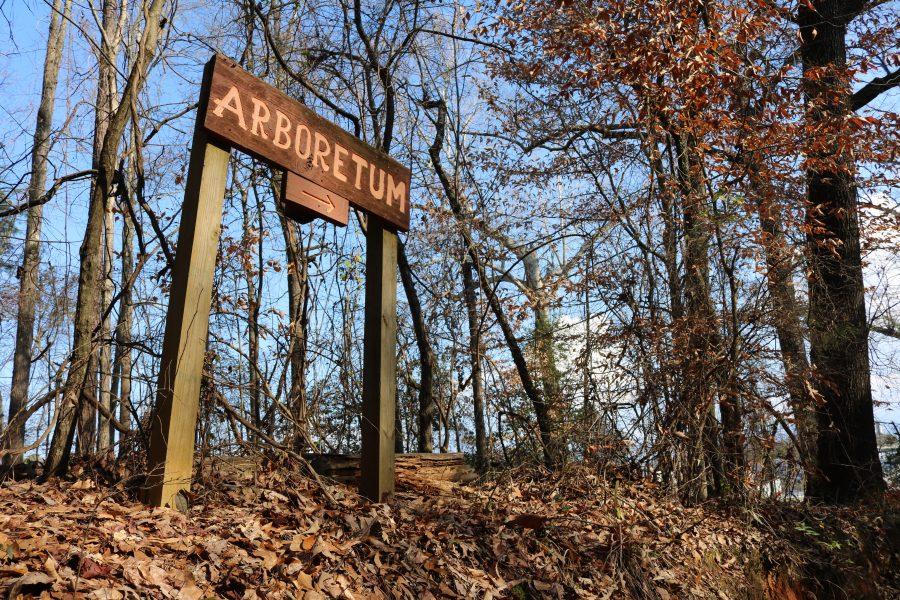Cars drive through a partially hidden iron gate and park next to a large grassy clearing where an owner and his dog throw a tennis ball. Paved running trails cut across the grass in different directions, some sloping downwards toward a large lake. Nearby, several leaf-covered hiking trails disappear into a quiet wooded area, eventually leading to a greenhouse, botanical garden, gazebo and small pond.
This peaceful setting is the University of Alabama Arboretum, a 60-acre arboretum sponsored by the Department of Biological Sciences in the College of Arts & Sciences. Open from dawn to dusk each day, the Arboretum provides recreational space and educational opportunities for the Tuscaloosa area. This large park is an affiliate of the University of Alabama Museums, which includes other museums and historic sites, such as the Museum of Natural History and the Gorgas House.
The University uses the area to conduct botanical research, but it is also open to the public, boasting over two miles of hiking trails through native woodland, an experimental garden, a tree platform overlook, running trails, a wildflower garden with over 250 species, and much more.
“The first time I went to the Arboretum, I felt like I wasn’t even in Tuscaloosa anymore,” said John Clary, a junior Chemical Engineering major.
Clary said he first went to the Arboretum with a friend who often goes to enjoy the hiking and running trails. Together, they explored the woodland area and stumbled across a creek, small garden, and large magnolia tree that seemed to be a popular climbing and hammock spot.
Joseph Wright, one of the Arboretum’s two caretakers, said that climbing and other potentially destructive activities are not allowed because the Arboretum is also a research facility where Biology students and faculty monitor trees, flowers and other natural life.
“That’s actually something most people don’t realize,” said Wright, who explained that climbing damages the bark of many trees. “[The rule] is out of concern for the people that come out here and for the trees, like the magnolia.”
As caretaker, Wright uses a special rope apparatus to climb the trees without damaging them. Once in the branches, he performs routine checks, looking for diseases or other dangers such as bark inclusion, a growth issue which recently caused one of the Arboretum’s larger trees to split down the middle and die.
“I don’t want to get too technical with you, but bark inclusion is basically where the bark and the growth of a tree gets stuck in the joint of the limb and it makes for a very weak limb,” said Wright, who spent years working with licensed arborists in Tuscaloosa before taking his current position at the Arboretum.
The Arboretum has plenty to see and do. Visitors who come for an afternoon can enjoy the expansive hiking or running trails and see over 130 rare or special interest trees. A popular viewing spot is the tree platform, a high overlook that wraps around a tree trunk and offers a larger view of the oak-hickory woodland area.
Wright said the platform appeals to many visitors because it is much higher than other areas of the Arboretum and provides a wider view of the surrounding forest.
“When people look at trees, they often look for the largest trees,” Wright said. “It’s really quite wonderful to go up to trees like that and just look up and see how far it goes.”
The Arboretum also welcomes leashed dogs, and many owners seize the opportunity to take their pets somewhere less crowded than the Quad on campus or other parks in town. There is a parking area for visitors’ convenience near the clearing and one farther in the Arboretum, close to the gazebo and trailheads.
“To get there, you have to go down a dirt road that eventually leads you to the Arboretum, but once you’re there, there are plenty of places to explore for an afternoon,” Clary said.
The Arboretum entrance is located near the intersection of Veterans Memorial Parkway and Loop Road. Admission is free.









